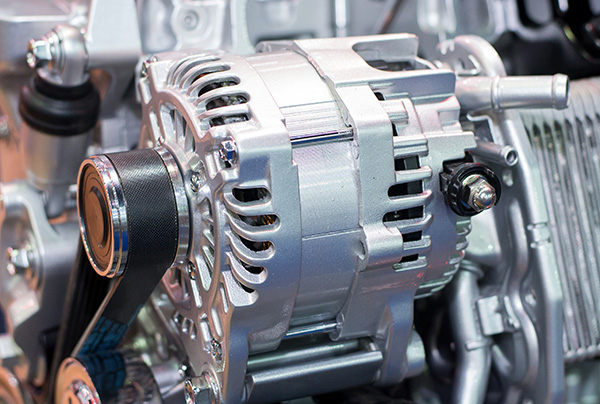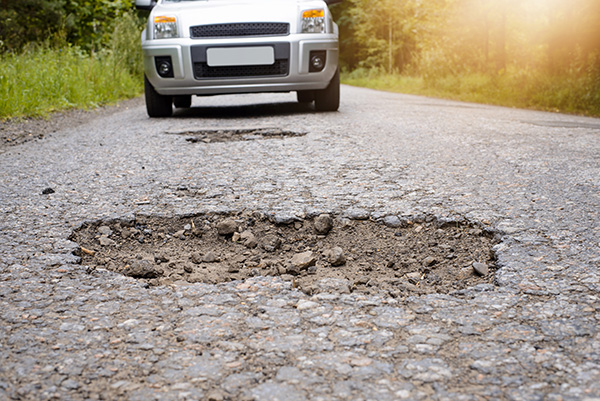Posted on 10/26/2024
At South Denver Automotive we are big fans of Subaru vehicles. When you bring your Subaru Impreza to our Denver auto care facility, you will find friendly customer service and highly skilled mechanics working on your vehicle. Whether it needs routine oil change, or complex diagnostics and repairs, our staff will take great care of you and your vehicle. South Denver Automotive is a family owned auto repair shop in Denver. We have the breadth and depth of technical skills to work on most vehicles currently on the roads – both foreign and domestic. Our technicians are certified by the National Institute for Automotive Service Excellence (ASE), and their work is backed by our industry-leading 48 month / 40,000 miles warranty. Our warranty underscores not only quality of our work, but also quality of the parts we use when servicing and repairing your Subaru, and it gives you the peace of mind that comes from knowing that repairs have long warranty, and that you vehicle was repaired b ... read more
Posted on 9/30/2024
Welcome to South Denver Automotive, your trusted destination for superior maintenance services and repairs of Toyota Land Cruisers in Denver. As an independent auto repair shop passionate about motor vehicles, we provide specialized care to keep your Land Cruiser in top condition. Our commitment to quality service and personalized attention ensures that you receive the best care possible. At South Denver Automotive we recognize that your Land Cruiser is an essential part of your daily life. Our experienced team is here to handle all aspects of its maintenance and repairs, including: Scheduled Maintenance: Regular maintenance is key to extending the life of your Land Cruiser. We handle everything from routine oil and filter changes to comprehensive services designed to keep your vehicle running smoothly. Tire Services: Whether you need new tires, tire rotation, or balancing, we ensure your tires are in peak condition to provide the best performance and safety. Suspension Ser ... read more
Posted on 9/27/2024

Your car’s alternator is one of those crucial components that often goes unnoticed—until it stops working properly. Responsible for powering the electrical system while your engine is running and keeping your battery charged, the alternator ensures that everything from your headlights to your radio works. But what happens when your alternator starts to fail? Recognizing the early signs of a faulty alternator can save you from unexpected breakdowns and costly repairs. 1. Dimming or Flickering Lights One of the most noticeable signs that your alternator is failing is dimming or flickering lights. Whether it's your headlights, interior lights, or dashboard illumination, any irregularity in brightness often points to an alternator issue. The alternator is responsible for providing consistent electrical power to these systems. When it starts to fail, it can’t keep up with the energy demand, causing lights to flicker or appear dimmer than usual. If y ... read more
Posted on 8/30/2024

On a scorching summer day, there's nothing worse than discovering your car's air conditioning isn't working. You turn the dial, hoping for a refreshing blast of cold air, but instead, you're met with disappointment. Understanding why your car's AC isn't cooling properly can save you a lot of sweat and frustration. Let's explore the common causes of this issue and what you can do to restore comfort to your ride. Low Refrigerant Levels One of the most common reasons your car's AC isn't cooling effectively is low refrigerant levels. Refrigerant is the lifeblood of your air conditioning system, responsible for absorbing and releasing heat to cool the air. Over time, small leaks can develop in the AC system, causing refrigerant levels to drop. This issue isn't always obvious, as leaks can be tiny and hard to detect without professi ... read more
Posted on 7/26/2024

Driving a car comes with its fair share of quirks and odd noises, but one sound that can be particularly concerning is a knocking noise when driving over bumps or uneven pavement. It's not just an annoyance but a signal that something might be wrong with your vehicle. Whether you're an experienced driver or someone who recently got their license, this unsettling sound can make you wonder what's happening beneath your car's surface. So, let's look into the reasons why your car might be knocking over bumps and what you can do about it. 1. Suspension System Issues The suspension system is your car's cushion, absorbing shocks and ensuring a smooth ride. When you hear a knocking noise over bumps, it's often related to a problem ... read more
Posted on 6/28/2024

As the temperatures rise and summer approaches, many drivers begin to wonder if they need to change their motor oil for the warmer months. It's a common question and one that deserves a thoughtful answer. After all, your car's engine is the heart of your vehicle, and proper lubrication is crucial for its longevity and performance. We believe that understanding the nuances of motor oil and its relationship with seasonal changes can help you make the best decisions for your vehicle. The Role of Motor Oil in Your Engine Motor oil is essential for the smooth operation of your engine. It lubricates the moving parts, reducing friction and wear. It also helps to cool the engine by carrying heat away from critical areas, and it cleans the engine by trapping dirt and debris, preventing them from causing damage. Without motor oil, your engine would quickly overheat and suffer catastrophic damage. How Seasonal Changes Affect Motor Oil Viscosity and Te ... read more
Posted on 5/29/2024

Driving on mountain roads can be exhilarating, but it also presents unique challenges, especially when it comes to braking. There are some effective techniques to brake safely on mountain roads without risking overheating your brakes. Understanding the Challenge Braking on mountain roads involves navigating steep descents and tight turns, which can significantly strain your vehicle's brakes. The continuous application of brakes generates heat, and if not managed properly, it can lead to brake fade or even failure. What is Brake Fade Brake fade is a phenomenon where prolonged or aggressive braking leads to a loss of stopping power. In mountain driving, the constant strain on brakes can exacerbate brake fade, compromising safety. Understanding this issue is crucial for drivers, as it highlights the importance of proper braking techniques and maintenance to ensure safe mountain travel. Techniques for Safe BrakingAnticip ... read more
Posted on 5/13/2024
Before heading out for a vacation or a road trip, it’s a good idea to check your vehicle’s wheel alignment. Misaligned wheels result in accelerated tire wear. It’s easy to clock thousands of miles over the summer, so the wear and tear on the tires can be substantial. At South Denver Automotive we offer complete tire care, including new tires and wheel alignment. While there are symptoms that alert you to the need for wheel alignment: uneven tire wear, vibrations while driving, or car pulling to one side, it’s best to bring your vehicle to South Denver Automotive, and let our nationally ASE certified technicians perform alignment check, and while we have your vehicle in the shop, we can also check condition of the tires, and perform tire rotation so you vehicle will be ready for the summer fun. Wheel alignment is performed by our highly experienced technicians using computerized alignment machines that can measure alignment accuracy to a level greater than what ... read more
Posted on 5/5/2024
At South Denver Automotive we offer comprehensive auto care, including check engine light diagnostics and repairs. Check engine light (CEL) is a warning light that can come "on" for a variety of reasons; actually, hundreds of conditions can cause the onboard computer to turn on the CEL. CarMD.com, a company that provides car owners with information about check engine light repairs, has been providing yearly studies of the top reasons for the check engine light warning. After analyzing over 15 million reports submitted in 2023, here is what they found: 1) Catalytic converter replacement– unfortunately catalytic converter thefts continue across the country, hence catalytic converter replacement is the first item on the list. 2) ... read more
Posted on 4/19/2024

Springtime in Colorado brings beautiful scenery and warmer weather, but it also brings something less desirable—potholes. These road hazards can wreak havoc on your car's alignment, causing a range of issues that can affect your driving experience and safety. The Problem with Colorado Potholes As the snow and ice melt away, they reveal the damage left behind on the roads—potholes of all shapes and sizes. These craters form when water seeps into cracks in the pavement, freezing and expanding and then thawing, leaving gaps. As cars drive over these weakened spots, the pavement collapses, creating potholes that can vary in depth and severity. How Potholes Affect Your Car's Alignment When you hit a pothole, your car's suspension system absorbs the impact to protect you and your vehicle. However, this can throw off your car's alignment, causing ... read more